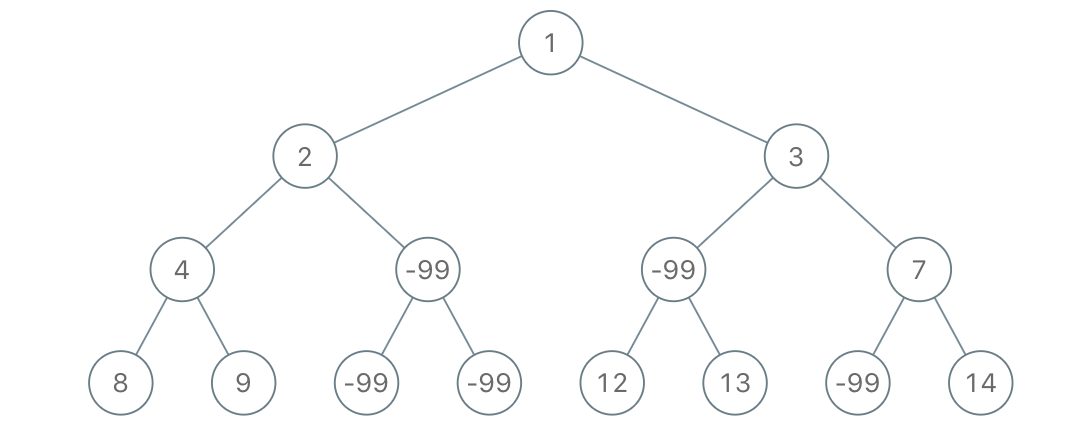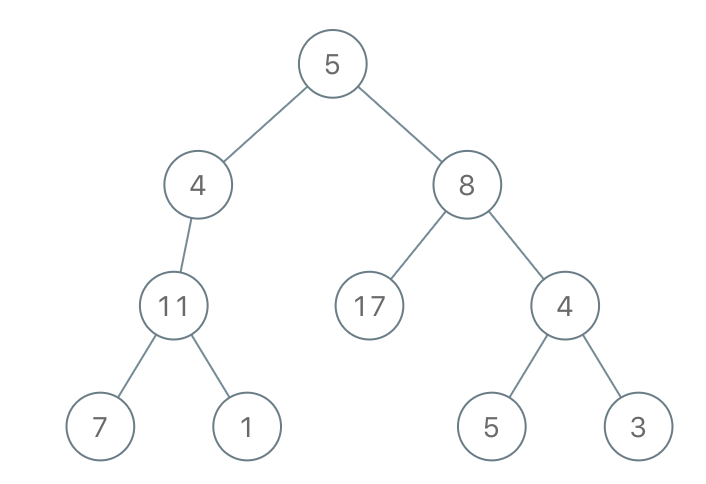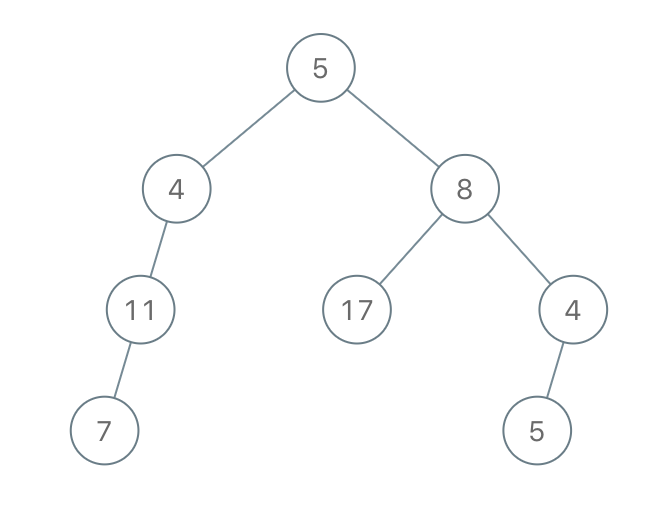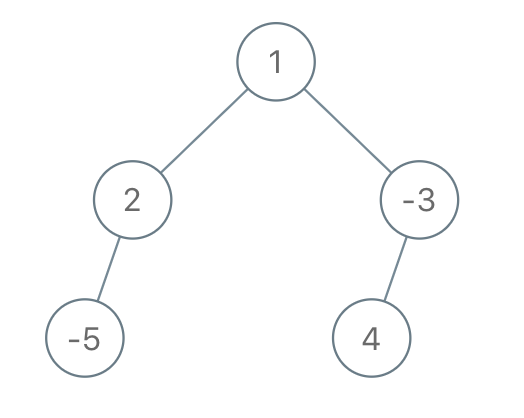题目描述
给定一棵二叉树的根 root,请你考虑它所有从根到叶的路径:从根到任何叶的路径。(所谓一个叶子节点,就是一个没有子节点的节点。)
假如通过节点 node 的每种可能的 “根-叶” 路径上值的总和全都小于给定的 limit,则该节点被称之为 不足节点,需要被删除。
请你删除所有不足节点,并返回生成的二叉树的根。
样例


输入:root = [1,2,3,4,-99,-99,7,8,9,-99,-99,12,13,-99,14], limit = 1
输出:[1,2,3,4,null,null,7,8,9,null,14]


输入:root = [5,4,8,11,null,17,4,7,1,null,null,5,3], limit = 22
输出:[5,4,8,11,null,17,4,7,null,null,null,5]


输入:root = [1,2,-3,-5,null,4,null], limit = -1
输出:[1,null,-3,4]
注意
- 给定的树有
1到5000个结点。 -10^5 <= node.val <= 10^5-10^9 <= limit <= 10^9
算法
(递归) $O(n)$
- 采用自底向上的删除策略。
- 如果某个结点是叶子结点,则判断到根结点的路径是否小于
limit。如果小于,则直接将其变为NULL,然后回溯。 - 如果不是叶子结点,则递归删除左儿子结点和(或)右儿子结点。如果当前结点变为了叶子结点,也将其变为
NULL,因为这代表着所有 “根-叶” 路径都小于limit。
时间复杂度
- 每个结点遍历一次,故时间复杂度为 $O(n)$。
空间复杂度
- 递归需要栈空间,故空间复杂度为 $O(h)$,$h$ 为树的最大高度。
C++ 代码
/**
* Definition for a binary tree node.
* struct TreeNode {
* int val;
* TreeNode *left;
* TreeNode *right;
* TreeNode(int x) : val(x), left(NULL), right(NULL) {}
* };
*/
class Solution {
public:
void cut(TreeNode* &root, int limit, int sum) {
if (root -> left == NULL && root -> right == NULL) {
if (sum < limit)
root = NULL;
return;
}
if (root -> left) {
cut(root -> left, limit, sum + root -> left -> val);
}
if (root -> right) {
cut(root -> right, limit, sum + root -> right -> val);
}
if (root -> left == NULL && root -> right == NULL)
root = NULL;
}
TreeNode* sufficientSubset(TreeNode* root, int limit) {
cut(root, limit, root -> val);
return root;
}
};

